Leather Types
Leather is created through the tanning of hides and skins, converting the putrescible skin into a durable and long lasting material. Leather is not leather until the skin or hide has been tanned. There are numerous different types, manufacturing processes, uses, and ways to care for leather.
ANILINE LEATHER:
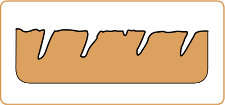
The most expensive type of leather due to the exclusive selection of hides. The leather is dyed in a dye bath and no pigmented coating is applied, allowing the leather to breathe naturally showing all its own unique markings and shade variations. Because of this, no two aniline leathers are the same and so when you purchase one you are buying an exclusive item with its own story of nature to tell.
Pros:
The most natural type of leather available, it is very soft and delicate to the touch and bares all of natures own markings on the hide. It stays warm in the winter and cool and ventilated in the summer.
Cons:
Because the leather contains no protective coating it is very absorbent and so is prone to staining and fading. These problems can be easily adverted by keeping to our Four Seasons Leather Care Plan
SEMI ANILINE LEATHER:
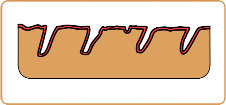
This type of leather is similar to aniline but with the added advantage of a thin protective coating that helps resist stains. Some natural markings may still be visible but not to the extent of an aniline leather.
Pros:
Easy to clean & maintain. It has a nice soft feel and still has some natural markings visible, often with a two tone appearance.
Cons:
There isn't much room for complaint with semi aniline leather except that it is slightly less natural than aniline leather.
PIGMENTED LEATHER:
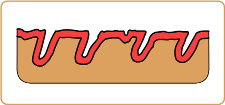
This type of leather is coated with a fine pigmented spray, which gives the leather a sound covering of colour with no shade variations. Sometimes known as corrected grain leather, this is when an artificial grain pattern is embossed into the hide.
Pros:
The process in which the leather is made makes it very durable and hard wearing. It has high resistance to light and is very easy to clean and maintain. The colour is uniform and all defects are masked.
Cons:
Cons: Reduced breath ability and the grain pattern is masked making this type of leather less natural.
BI-CAST:
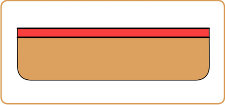
This type of leather has a polyurethane film bonded to the surface creating a very hard wearing and easy clean leather.
Pros:
Extremely easy to clean and maintain, uniform colour and good light fastness.
Cons:
It has no natural grain surface and so is not very natural.
PULL UP:
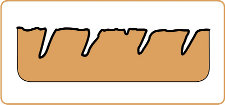
A very natural type of leather that is designed to distress as it ages because the colour lightens when stretched or scratched.
Pros:
Has a very natural and lived in look. All natural markings are visible and has a soft & delicate touch.
Cons:
It can be very difficult to clean and it stains quite easily. These problems can be easily adverted by keeping to our Four Seasons Leather Care Plan
NUBUCK:
This is leather buffed grain side to create a velvety surface.
Pros:
Nubuck is very natural with a lovely soft and delicate feel.
Cons:
It is very difficult to clean and maintain as it has no protective coating. Light fastness is poor and the leather is prone to staining. However, these problems can be easily adverted by keeping to our Four Seasons Leather Care Plan
Suede:
This is the split hide buffed to create a nap, whereas NuBuck is the top grain that is buffed. Suede will always have a much rougher texture, more like a carpet pile, whereas NuBuck has a velvet texture.
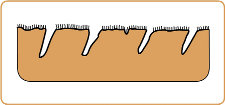
SPLIT HIDE:
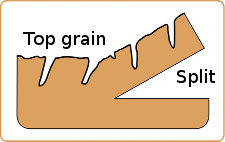
This is where the leather is split horizontally during the tanning process. This split is the bottom of the two halves. The top half is known as top grain leather.
The split is very weak and should only ever be used on the backs and side of furniture. The leather is pigmented and then an artificial gain pattern is embossed into the pigment.



